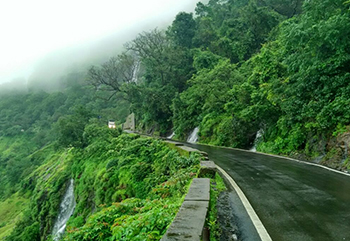10 Road Cycling Fallacies Busted

We can bet that you are likely to hear multiple different opinions from most people when you inform them about your intention to ride your cycle or you have been bicycling regularly on the busy city streets. Some would display concern for your safety and well-being, and others, especially those who use motorized vehicles, would prefer not to share the road with you. You will hear about negative and unfortunate cycling incidents and poorly backed cycling information.
What we'd like to do is put the false ideas of road cycling fallacies to rest. Let's separate the untruths from reality.
1) Cycling is Dangerous

Like any activity, cycling comes with risks. There are accidents involving cyclists and also a few fatalities each year. Accidents involving cyclists get more coverage than those that only involve motor vehicles. In reality, walking, cycling, and driving risks are comparable if you also consider the time spent in that activity. The reality is that the chance of a pedestrian having a fatal accident is similar to that for a cyclist. But that won't stop you from walking on the streets.
More dangerous to life is inactivity. More people die from heart diseases yearly, of which 10% of those deaths are directly linked to inactivity. So being a couch potato is more dangerous than being a cyclist.
Cycling is, in fact, getting safer. The increase of cyclists on the road is equal to the decrease in motor vehicles and directly co-relating to the safety of riders. So it's up to each of us to use cycles more often to make the roads safer. Safety will only keep increasing with the momentum of more cyclists triggering governments and town planners to have good reason to add bicycle-only lanes. Additionally, there is more knowledge and information available around safe cycling.
2) Cycling slows down road traffic
That is not really true. Bicycles take up less space, thereby decreasing congestion. The space used by a single car can be occupied by four to six bikes at the least. A bicycle lane width is less than half that of a car lane.
3) Cyclists should only ride in cycle lanes or along the extreme left of the road.
No law prohibits cyclists from riding on regular roads. Cyclists and other motorized two-wheelers are restricted in using some highways and freeways meant for fast-moving traffic. Cyclists can ride on all other roads and in any lane, but it is in the interest of all that they use the leftmost lane. And while a cyclist uses the left lane, the preferable riding style would be to own the lane and avoid riding to its extreme left or in the gutter. By riding in the lane's center, or you could share it with another two-wheeler, you are visible and, therefore, safer and will not fall in the blind spot of other drivers. And another plus point is you decrease your chances of getting a puncture which is a strong possibility with the debris that gets blown to the side of the road. However, if your route has cycle-only lanes, it would be preferable to use them.

4) If you want to cycle on the roads, you have to be male, fit, and young.
That's a fallacy that maybe cycling magazines inadvertently have portrayed the young, strapping male as the face of cyclists. Women cyclists are slowly but steadily streaming into the cycling arena. Also, the older age group is becoming health conscious and more aware of the benefits of cycling and getting them back on the saddle.
You don't have to get started on cycling after you have achieved some level of fitness. Cycling regularly will get you to be in top physical condition. To still enjoy a bicycle ride without feeling the strain, you have options in cycles that can help you with that. Geared cycles take away the short-breadth that you may feel while riding up slopes or even e-bikes where the electric motors can support your pedaling cadence, leaving you to enjoy the ride without the strain. If you look at the Dutch, a great example of the popularity of bicycle users, you will see that age is not a bar where 17% of their regular riders are in the 65 + age group. The truth is the opposite of the myth cycling is inclusive and does not discriminate on gender or age, and less-able people an additional transport option and independence.
5) Commuting to work means you are arriving to work hot and sweaty
Not necessarily. Most bicycle commuters are savvy travelers who arrive at work earlier to benefit from emptier roads and cooler weather conditions. You have multiple choices in bicycles styles, like those with gears and e-bikes. Geared bicycles make cycling more manageable, especially up slopes. An e-bike uses a motor to support a rider as little or as much as they require. These bicycle styles are preferable commute rides and cut out most of the work and physical strain that would leave you hot and sweaty.

6) Cyclists are unruly as they do not obey traffic rules
That is just a misconception, and painting colouring all cyclists with the same brush because of a few rotten apples is unfair. Cyclists have to follow the road traffic rules, including signals, lane riding, indicating through hand signals, using lights, and even wearing high visibility clothing for their own safety and minimizing the risk of an accident.
7) Cyclists are dangerous to pedestrians
We agree that it can be annoying and that cyclists must not be allowed to ride on footpaths. It would be interesting to note that cars and other motorized vehicles contribute to more pedestrian deaths than cyclists, which is a rare occurrence.
8) You can only make short trips on a cycle
Partly true and partly not true. Traveling by bicycle for chores, shopping, and commuting may work perfectly for smaller towns and cities where everything is cycling distance away. For larger cities, most distances cannot be covered with a short ride. However, using your bicycle is not necessarily required to be from home to destination and back solely. You can probably consider making the last or the first leg of your journey by bicycle, like traveling to the rail or metro or bus station where you can park your bicycle before taking the transit to your destination. So while it's true that it is preferable to travel shorter distances by bicycle, you can always include the cycle as part of a lengthier trip.
9) Cycling is not meant for large metropolitan cities

In big metros invariably one needs to travel over long distances. These cities suffer from pollution, road congestion, and noise pollution. All these three issues start from a motorized form of transport. You can do the best things to reduce the magnitude of these three problems by switching to eco-friendly transport like public mass transit systems and increased bicycle usage. Replacing fuel vehicles with electric versions would help decrease air pollution but would make no difference in road congestion and noise pollution.
10) Cycling in large cities means that you breathe in more air pollution
Quite true to some extent. When you cycle, your heart rate increases and your breathing; therefore, cycling will cause you to breathe in more airborne pollution produced by motor vehicles. But not comparatively- Several studies have shown that the air quality is worse inside a motor vehicle. Harmful polluted air builds inside a car or other vehicles, which means that the people inside them breathe more polluted air than people outside.
While we have exposed the truth in place of the common misconceptions of road riding, It is thumbs up for road cycling. As a cyclist, you have to be careful like any other driver, rider, or pedestrian while out on the roads. If you have unique thoughts about road cycling and would like to share, please write in the space available for comments below.
Related Blogs

Cycling Adventures
The Iconic And Best Cycling Route In MaharashtraOne iconic cycling route, ‘Mumbai to Goa’, stands out from all the other riding trails in Maharashtra

Cycling Adventures
Explore India Through 6 Incredible Cycling RoutesChoose from our curated selection of 6 cycling routes with diverse landscapes and different fitness levels

Cycling Adventures
The Top Cycling Route Near BengaluruTake an enjoyable cycling trip that culminates at a beautiful and picturesque hill station - Coorg

